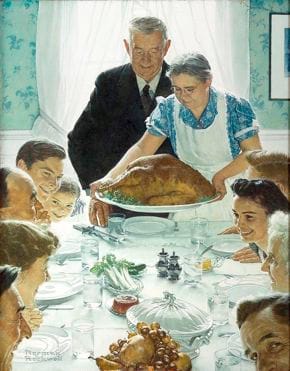Por Gabriela Gorab
La incertidumbre es una constante en la vida humana, pero en momentos de crisis global o personal, su intensidad puede ser abrumadora. En estos escenarios, la gratitud emerge como una herramienta poderosa para transformar la percepción de la realidad y cultivar una mente resiliente. Desde perspectivas contemporáneas como las ofrecidas por Joe Dispenza hasta principios filosóficos universales, el acto de agradecer no solo calma el caos interno, sino que también abre la puerta a nuevas posibilidades.
Joe Dispenza, autor y conferencista en neurociencia y física cuántica, argumenta que la gratitud es una emoción esencial que puede transformar el cerebro y el cuerpo. Según Dispenza, cuando una persona siente gratitud, está creando una experiencia emocional que anticipa resultados positivos, incluso en ausencia de evidencia concreta. Este proceso desencadena cambios en el sistema nervioso autónomo, permitiendo que el cuerpo entre en un estado de reparación y equilibrio. En su libro "Deja de ser tú", Dispenza señala: "Al practicar gratitud por lo que deseas como si ya fuera una realidad, comienzas a reconfigurar tu mente y cuerpo para un futuro diferente" además de su impacto neurológico, la gratitud ayuda a dejar fluir las cosas, una práctica que, aunque simple en teoría, es difícil en la práctica. Dejar ir las expectativas rígidas o la necesidad de control permite aceptar la incertidumbre como parte del proceso de la vida. La psicología positiva también apoya esta idea, destacando que la gratitud no niega las dificultades, sino que resalta lo que aún es valioso en medio de ellas . Según estudios realizados por Robert Emmons, experto en gratitud, ésto puede reducir la ansiedad y mejorar el bienestar general .
En tiempos de incertidumbre, la gratitud no es una negación de los desafíos, sino un acto consciente de reconocer lo que está bien en el presente. Cuando combinamos este reconocimiento con la disposición de dejar fluir las cosas, creamos un espacio interno que fomenta la resiliencia y la creatividad. Así, la incertidumbre deja de ser una amenaza y se convierte en un terreno fértil para el crecimiento personal y la transformación.

Freedom from Want, 1943Norman Rockwell
"Libertad frente a la necesidad", de Norman Rockwell, es considerada una de las representaciones más emblemáticas del Día de Acción de Gracias en Estados Unidos. También se destaca como una de las imágenes más idealizadas de esta celebración, evidenciada por las numerosas sonrisas y la ausencia evidente de conflictos entre los familiares reunidos alrededor de la mesa. La obra pertenece a una serie inspirada en el Discurso sobre el Estado de la Unión de 1941 pronunciado por Franklin D. Roosevelt, en el cual el presidente resaltó las libertades fundamentales que los estadounidenses deberían valorar: la libertad de expresión, de culto, y las libertades frente a la necesidad y el temor.
Este óleo sobre lienzo de 116.2 x 90 cm ha sido ampliamente exhibido, publicado y celebrado desde su creación: la obra forma parte de la serie Four Freedoms inspirada en el discurso de Franklin D. Roosevelt, debutó en The Saturday Evening Post. Más tarde, las pinturas originales fueron incluidas en la "Four Freedoms War Bond Show", una gira de 16 ciudades organizada por el Departamento del Tesoro de los Estados Unidos para recaudar fondos durante la Segunda Guerra Mundial. Este recorrido ayudó a generar más de 132 millones de dólares en ventas de bonos de guerra
Actualmente, "Freedom from Want" pertenece al Museo Norman Rockwell en Stockbridge, Massachusetts. También ha sido expuesta en instituciones destacadas como el Museo de Bellas Artes de Houston y el Museo de Arte de Denver, entre otros. La obra ha sido reproducida en múltiples formatos y continúa siendo icónica en la cultura popular de Estados Unidos
En cuanto a su valor, al ser una pieza de museo, no ha sido subastada directamente. Sin embargo, otras obras de Rockwell han alcanzado valores extraordinarios, como su pintura "Saying Grace," que se vendió por 46 millones de dólares en 2013, lo que sugiere que "Freedom from Want" tendría un valor similar o mayor si fuera puesta en el mercado.

Las opiniones expresadas son responsabilidad de sus autoras y son absolutamente independientes a la postura y línea editorial de Opinión 51.






Comments ()